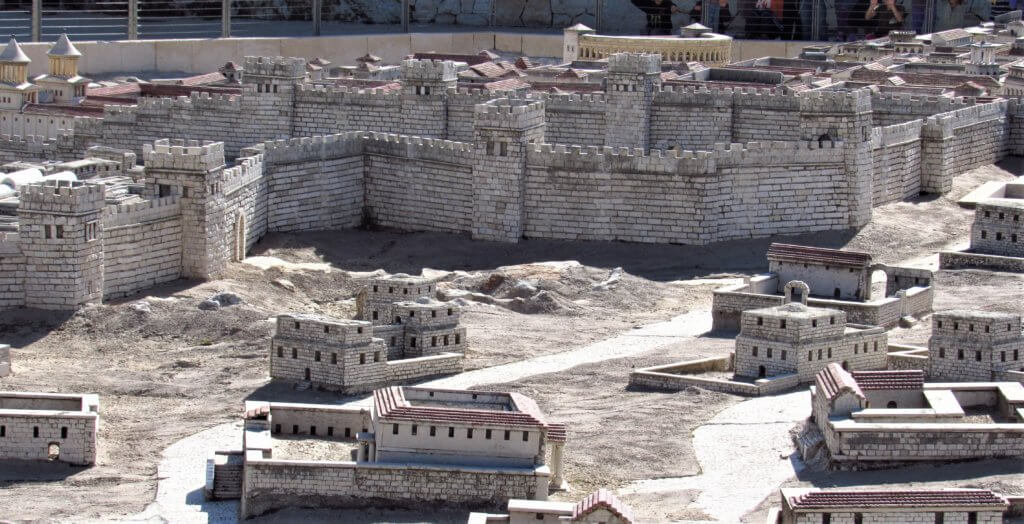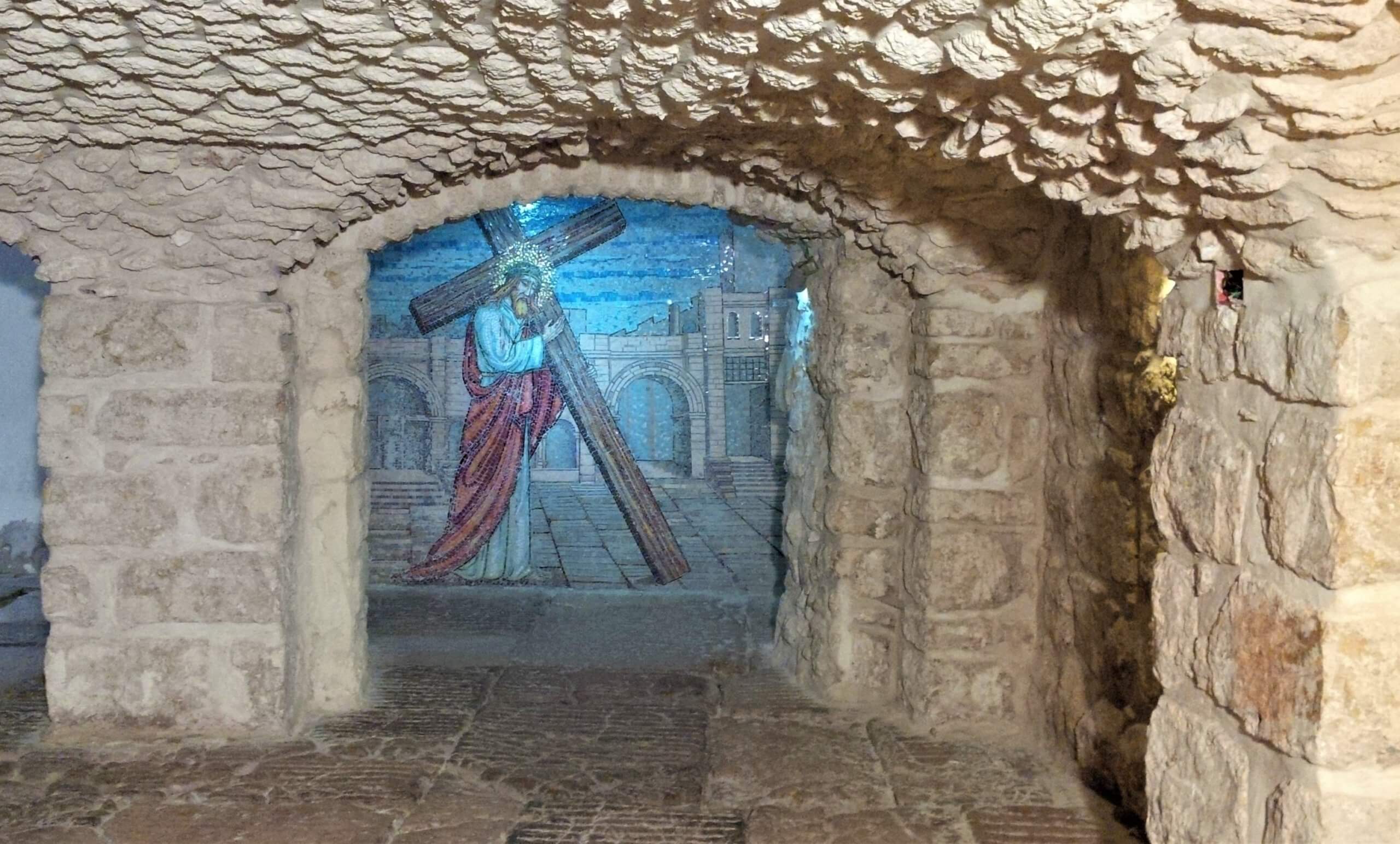The most asked question about my time in Israel is “What is your favorite place to visit?” Even though there are a thousand places to visit, my unequivocal answer is the Church of the Holy Sepulchre. This might not be true for others, and everyone can have their own opinion, but the Church of the Holy Sepulchre is very special to me. During some lunch breaks, I often walked into the Old City to the Church of the Holy Sepulchre. I found a quiet alcove or nook to be alone for prayer and reflection even when tourists packed the Church. This Church probably gets the most visitors of all the churches in and around Jerusalem. During my first week, I did not enter the Holy Sepulchre itself because the long lines. I learned to go either very early in the morning, or sometime in the middle of the week to avoid the crowds.

HISTORY SPARKS:
- The Church of the Holy Sepulchre is built on and around the site of Jesus’s crucifixion, burial and resurrection.
- Christians built the first church on this site in the 4th Century.
- The Church is one of the most visited sites in Christianity.
- 6 different Christian denominations maintain The Church of the Holy Sepulchre. The six denominations are: Armenian Apostolic Church, Greek Orthodox, Copts, Roman Catholics, Ethiopian Orthodox and Syrian Orthodox.
- FUN FACT: Crusaders carved crosses into the stone walls.
In Depth Review:
Location
The Church of the Holy Sepulchre was built on and around the site of Jesus’s crucifixion, burial and resurrection. The first known church built on this spot dates to the Roman Empire, specifically Emperor Constantine’s timeframe. The Roman Empire ruled over the region during the time of Jesus. As the followers of Christ grew their fledgling religion, the Roman Empire outlawed Christianity and persecuted its followers.
Constantine’s mother, Helena, converted to Christianity and convinced her son to change the law. She further convinced him to allow her to travel to Israel, where she searched for sites associated with Christ. Christians gathered around certain areas since Christ’s death and claimed they were the sites of significance in the story of Christ. Helena observed these rituals and selected certain sites as the true sites. Since that time, other research has been conducted, however there is still debate about the true locations of significant sites. For me, I know the sacrifices made Christ made far outweigh where the events took place, however I will accept the declared sites as the locations and give them the reverence required.
The first church built on this location originated in the early 4th century. The church was then destroyed in the early 11th century, but rebuilt and expanded after the First Crusade. The Church of the Holy Sepulchre is a church unlike most other churches. Most churches belong to one denomination of Christianity. The complex that is the Church of the Holy Sepulchre belongs to 6 different denominations. This wrinkle leads to some interesting situations. For example, there is a ladder that is located at the church in a spot that requires some maintenance. However, there is not an agreement on the maintenance so the ladder sits there waiting. The 6 denominations that have custody over the different parts of the church are the Armenian Apostolic Church, Greek Orthodox, Copts, Roman Catholics, Ethiopian Orthodox and Syrian Orthodox.

Stories exist of priests from different denominations getting into physical altercations over disputes. There are also times established for each denomination to hold services at the most significant locations inside the Church so there will be no arguments. Another unique fact, none of the six denominations hold the keys for the Church. That distinction belongs to a neutral Muslim party to prevent the Christians from fighting with each other. Most of the squabbling has been ironed out and a Status Quo has been in place, and largely upheld since the mid-19th century.
What is unique about the location in regards to the City of Jerusalem? This site sits at a crossroads outside the 1st century city gates. Everyday citizens passing observed the crucify criminals and hopefully learn not to commit the same crimes.

During the building of the Church in the 4th century, workers dug out most of the quarry containing the tomb so a structure could be built over the site. In fact, the Holy Sepulchre is not the only tomb inside the Church. The Holy Sepulchre is in the Rotunda. On the outside of the Rotunda (on the west side) there is a smaller room with 1st century tombs you can go in. Jesus’s Tomb is the busiest and one of the holiest sites in Christianity.

To be continued in Part II https://beyondlastweek.com/church-of-the-holy-sepulchre-part-2/




2 Comments
Church of the Holy Sepulchre Part 2 - Beyond Last Week
March 8, 2020 at 9:20 pm[…] If you have not read part 1, please click here: https://beyondlastweek.com/church-of-the-holy-sepulchre-part-1/ […]
Via Dolorosa - Beyond Last Week %
April 8, 2020 at 5:47 am[…] two posts about the Church of the Holy Sepulchre for a more detailed description about Golgotha. ( https://beyondlastweek.com/church-of-the-holy-sepulchre-part-1/ https://beyondlastweek.com/church-of-the-holy-sepulchre-part-2/ […]